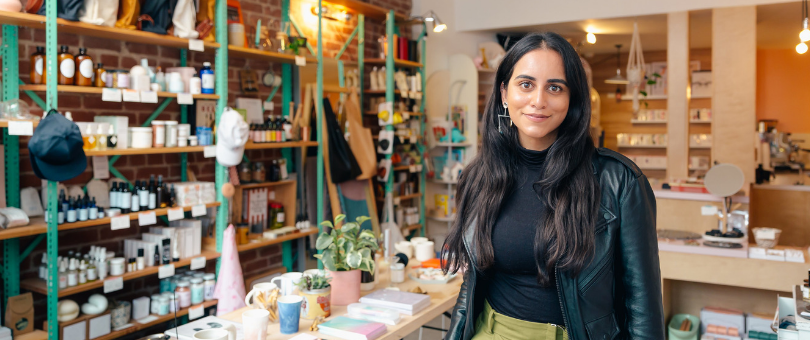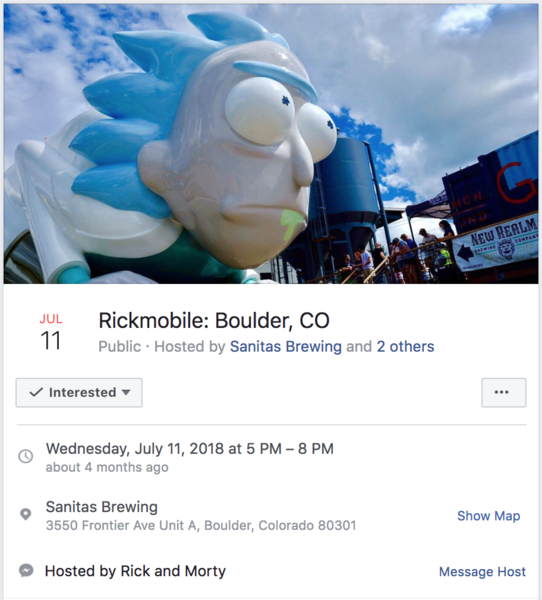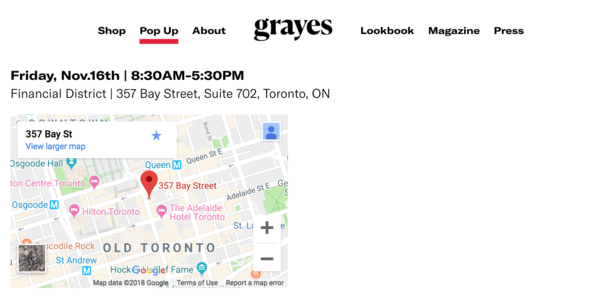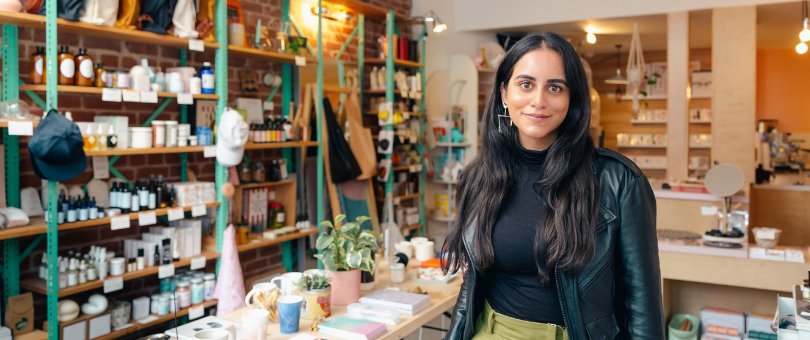 Whether you’ve dabbled in physical retail before or not, pop-up shops are a great way to drive buzz, awareness, and sales. Not to mention they’re also effective in testing new ideas, products, and markets. We’re fans of pop-ups.
Whether you’ve dabbled in physical retail before or not, pop-up shops are a great way to drive buzz, awareness, and sales. Not to mention they’re also effective in testing new ideas, products, and markets. We’re fans of pop-ups.
At risk of sounding cliché though, if you launch a pop-up, did it ever happen if no one came?
The thing is that many brands put so much time and effort into planning the most important aspects of the pop-up that some of the smaller details often fall to the wayside.
A few weeks ago, for example, I was excited to check out a pop-up shop at my local university. Since I’m not a student, I’m not very familiar with the campus. I spent 20 minutes driving in circles, getting trapped on one-way streets, before I finally found it — next to a NO PARKING sign. I was so frustrated that I didn’t even stick around for the freebies.
That’s not the impression you hope to make on your customers when you launch a pop-up shop. It’s supposed to be a seamless, positive experience for your customers. So, save your shoppers the hassle and bear in mind these tips to make sure people can actually find and attend your pop-up.
Visual Signage and Cues
First and foremost, you’ll want to make sure there are ample visual cues at your actual pop-up. This includes your storefront, window displays, signage, and sandwich boards. You can also create temporary chalk art leading pedestrians to your pop-up with messages and directional signage written in chalk (just make sure this okay at your location from a legal perspective first).
Evelyn & Bobbie painted the outside of the building for their pop-up with an eye-catching, branded design to help the pop-up stand out against the surrounding businesses.
Pop-ups can — and should — get more creative than traditional brick-and-mortar stores. Remember, a pop-up is an event, not a typical retail experience. It should be presented as such.
“Though at first blush it seems counter-intuitive, a pop-up should look exactly like a pop-up. It should feel temporary,” says Christian Gilbert, senior account executive at brand experience agency MC2. “Passersby should know instantly that it’s different from other shops — that it will go away, and they’d better check it out now.”
Inflatable signage, cubes, marquees, and even logos can help shoppers spot your pop-up from afar.
“Brands with a healthy budget could take inspiration from Samsung at Americana in L.A.,” Gilbert says. “Every car entering the parking garage was presented with a gigantic wall mural advertising the [pop-up].” This spread awareness about the event for individuals who parked at the garage for other reasons.
Looking for more ideas? Check out these two articles:
- A Foolproof Guide to Creating Window Displays That Turn Heads and Drive Foot Traffic
- 10 Unique Window Displays To Inspire Retailers To Build Their Own Eye-Catching Design
Facebook Events
Facebook events are a great way to not only keep the pop-up top-of-mind but also to share important updates and — you guessed it — the location of the pop-up.
When you create an event on Facebook, you can list the location of the event. If your pop-up is at an established business, landmark, or other location, you’ll often be able to simply type that in and use that, like the Ricky & Morty pop-up held recently at Sanitas Brewing in Boulder, Colorado.
 They also enabled the “Message Host” feature. If you’re able to keep up with it, you can turn this on so that you’re available to help people find their way in case they’re lost.
They also enabled the “Message Host” feature. If you’re able to keep up with it, you can turn this on so that you’re available to help people find their way in case they’re lost.
Not holding your pop-up at an established or well-known location? Or maybe the location is too big (for example, you wouldn’t want to advertise your event at University of Colorado, because the campus is large). With the coordinates, users can tap on the address and be taken to navigation assistance.
Maps
Speaking of maps, these are crucial for helping people find your pop-up location. One of the biggest mistakes a brand can make, according to Gilbert, is “not including the address and zip code of the pop-up so shoppers can get smartphone directions.”
Grayes lists the pop-up address on their site, as well as embeds a Google Map with a pin denoting the location.
 You can create your own Google Map and embed it on your site, as well as offer a direct link for users to navigate. Google has a guide to help walk you through this process.
You can create your own Google Map and embed it on your site, as well as offer a direct link for users to navigate. Google has a guide to help walk you through this process.
You can also create your own map that has helpful landmarks and visual cues, similar to how tourist destinations often have free maps of the area to help visitors get around.
FURTHER READING: Increase your online and offline store traffic with Google’s “near me” results.
Wayfinding Assistants
Sometimes, maps and signs just aren’t enough and it’s time to call in human reinforcements. Assigning employees, or even hiring temporary stuff, to hang out near the location of your pop-up and direct people where to go. (Bonus if they can offer samples to lure in passersby!)
Roody Originals, which sells ugly Christmas sweaters, has used this very tactic. The brand has successfully opened eight seasonal pop-up shops, timed for when their products are in demand. Promotional staff donning ugly sweaters stand outside and give out chocolates.
“While we didn’t ask passersby for anything or even mention the shop unless they asked, we always got an uplift in customers when out on the street,” says CEO and founder Ross Culliton.
One of Roody Originals’ pop-ups was at an upstairs space, which had the potential to deter foot traffic. As a solve, Culliton hired a band to play out the window.
“Crowds gathered on the street to look, and passersby came up to check out what was happening,” he says. The band indirectly helped shoppers identify where the action was at.
Local Marketing and Geo-Targeting
This next idea is a bit more advanced, but it can yield great results when done well. Because your pop-up shop will be in a specific location and you’ll ideally target a specific customer profile, you’ll have extremely targeted advertising options.
Gilbert stresses the importance of knowing who you’re selling to at your pop-up.
“Closely identify the target audience,” he says. “This not only ties into the physical location of the pop-up, but also how to reach them. Use the medium your target demo uses.”
Run geo-targeted paid social and display ad campaigns (again, depending on where your audience hangs out) to get the word out about your pop-up to a local audience.
“Be very specific about what is happening at the pop-up to heighten curiosity,” advises Gilbert. “For St. Ives in Manhattan, a social media campaign to young women pushed a particular aspect of the pop-up experience: mixing your own cosmetics.”
Check out these guides to get started with your own campaigns:
- Online Banner Ads
- Facebook Ad Types for Your Ecommerce Store
- Advertise on Facebook
- The Beginner’s Guide to Advertising on Instagram
Keep Information Consistent
While there are many different tactics to employ to help shoppers simply find your pop-up, it’s even more imperative to keep the information consistent. It could be helpful to create a list of where you’ve advertised or published the location of your pop-up, so you can easily refer to it should the location change or you need to update it to something more specific.
Which tactics have you employed to increase awareness and attendance to your pop-up? How do you make sure shoppers don’t get lost on the way?

